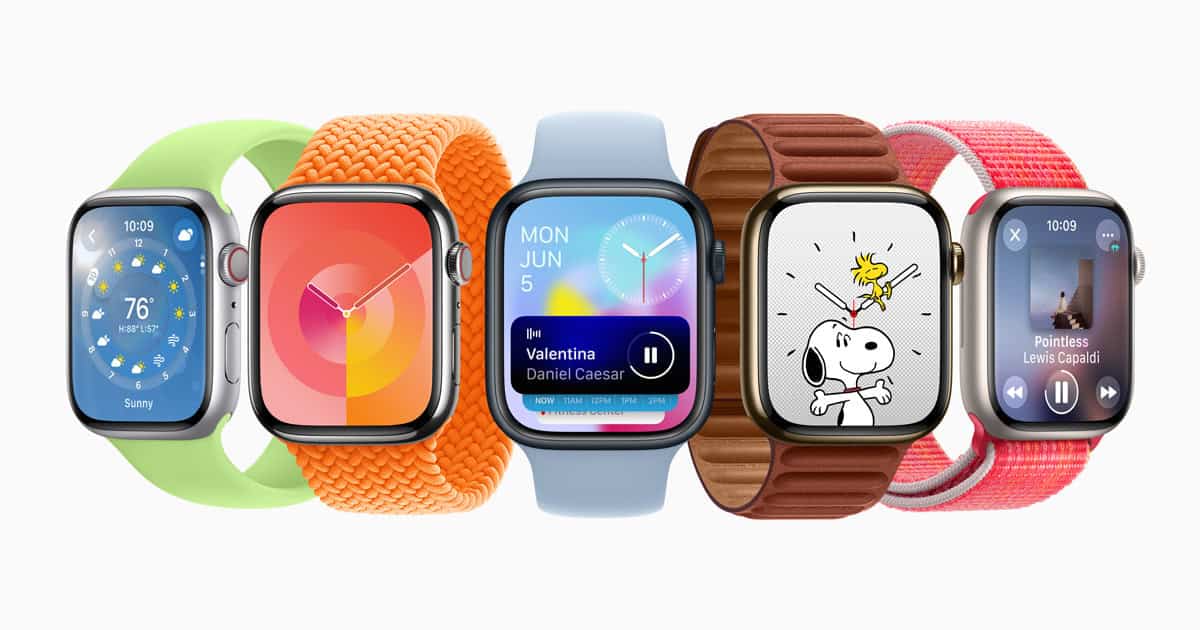Apple has released watchOS 11.6.1, and it brings more than just small fixes. The update restores the Blood Oxygen app on Apple Watch Series 9, Series 10, and Apple Watch Ultra 2 in the United States. This change matters because the feature was previously unavailable due to a legal dispute, and now users can access it again with a redesigned setup.
The update also includes security improvements that keep the device stable and safe. While not packed with flashy new tools, watchOS 11.6.1 focuses on making sure the Apple Watch runs smoothly and that key health features work as expected. Pairing it with iOS 18.6.1 ensures the latest functions activate properly.
For anyone who depends on health tracking, this release is worth the quick install. Apple has clearly aimed this update at restoring confidence in its health features while maintaining strong device security.
What’s New in watchOS 11.6.1
Apple released watchOS 11.6.1 on August 14, 2025, alongside iOS 18.6.1. While it’s a minor update, it delivers one of the most important fixes for Apple Watch users in the U.S.—especially those with the newest models.
🔹 Key Updates in watchOS 11.6.1
1. Blood Oxygen Monitoring Restored (U.S. Only)
- Due to a patent dispute earlier in 2024–2025, Apple had to disable the Blood Oxygen app on:
- Apple Watch Series 9
- Apple Watch Series 10
- Apple Watch Ultra 2
- With watchOS 11.6.1 + iOS 18.6.1, Apple has brought back Blood Oxygen monitoring in a new way:
- The Apple Watch collects raw sensor data.
- The iPhone processes the data and displays results in the Health app.
- This workaround ensures U.S. users regain access to the feature without violating the patent ruling (source: Economic Times).
2. Bug Fixes & Stability Improvements
- Fixes syncing issues between Apple Watch and iPhone Health data.
- Improves reliability of background health tracking.
- General performance optimizations for smoother watchOS experience.
3. Security Updates
- Apple patched several security vulnerabilities to protect user data.
- As with most “.1” releases, this is a recommended update for all users.
🔹 Should You Upgrade?
✅ Yes, upgrade if:
- You own an Apple Watch Series 9, Series 10, or Ultra 2 in the U.S. (to regain Blood Oxygen monitoring).
- You want the latest security protections.
- You experienced syncing or health data issues on watchOS 11.6.
❌ You could wait if:
- You’re outside the U.S. and don’t use Blood Oxygen features.
- You prefer to update only with major releases.
🔹 How to Update to watchOS 11.6.1
- On your iPhone, open the Watch app.
- Go to General > Software Update.
- Download and install watchOS 11.6.1.
- Make sure your watch is on the charger and at least 50% charged.
✅ Bottom Line
watchOS 11.6.1 is a small but very important update:
- Restores Blood Oxygen monitoring in the U.S. via iPhone processing.
- Fixes syncing and stability issues.
- Delivers critical security updates.
If you use an Apple Watch Series 9, Series 10, or Ultra 2 in the U.S., this update is essential.
Key Takeaways
- watchOS 11.6.1 restores Blood Oxygen on newer Apple Watch models
- The update improves security and stability
- It requires iOS 18.6.1 for full functionality
Key Features and Updates in watchOS 11.6.1
Apple released watchOS 11.6.1 as a focused update that brings back a major health feature, aligns with iOS 18.6.1, and ensures smooth support across recent Apple Watch models. It also highlights how users in the United States can once again access tools that were previously restricted.
Restored Blood Oxygen Experience
The most notable change in watchOS 11.6.1 is the return of the Blood Oxygen app for Apple Watch users in the United States. This feature had been disabled on newer models due to a legal dispute but is now available again.
Owners of the Apple Watch Series 9, Series 10, and Apple Watch Ultra 2 can once more track their blood oxygen levels. This tool measures oxygen saturation through the built-in sensors on the watch. It helps users monitor their fitness and overall health trends.
Apple emphasizes that the readings are not meant for medical use but can provide useful insights for wellness tracking. The feature works best when the watch fits snugly on the wrist and the user remains still during a reading.
For many, the return of this function restores one of the most popular health features on recent Apple Watch models. More details on this update can be found through 9to5Mac’s coverage of watchOS 11.6.1.
Compatibility and Device Support
watchOS 11.6.1 supports the same lineup of devices that run watchOS 11. That includes the Apple Watch Series 6 and later, as well as both generations of the Apple Watch Ultra. The update is not available for older models like Series 5 or Series 4.
The Apple Watch Series 9 and Apple Watch Ultra 2 receive the most attention since these models were directly affected by the earlier removal of the Blood Oxygen app. With this release, users regain full access to the feature without hardware changes.
Device compatibility ensures that users can keep their watches secure and up to date. Apple continues to focus on performance improvements and stability across supported models.
This update also aligns with Apple’s broader software ecosystem, keeping watchOS consistent with iOS, iPadOS, and other platforms. A full list of supported devices can be found on Apple’s official support page.
Integration with iOS 18.6.1
watchOS 11.6.1 works in tandem with iOS 18.6.1. Both updates were released on the same day to reintroduce the Blood Oxygen app in the United States. Users must update their iPhone to iOS 18.6.1 before installing the watchOS update.
The paired release ensures that the iPhone and Apple Watch remain in sync. Without the iPhone update, certain features including the restored blood oxygen tracking may not function as intended.
This integration reflects Apple’s approach to ecosystem updates. By aligning iOS and watchOS, Apple reduces compatibility issues and improves reliability across devices.
For users who rely on health features, updating both systems at the same time is important. More details on the joint rollout are covered by AppleInsider.
Software Update Process
To install watchOS 11.6.1, users should first update their iPhone to iOS 18.6.1. Once complete, they can open the Watch app on the iPhone and navigate to General > Software Update. The Apple Watch must be charged to at least 50% and placed on its charger during the process.
The update file is downloaded to the iPhone and then transferred to the watch. Installation can take some time depending on the model and network speed. Users should keep both devices near each other and connected to Wi-Fi.
For those who prefer updating directly on the watch, the option is available under Settings > General > Software Update. However, updating through the iPhone is usually faster and more reliable.
Completing the update ensures that the Apple Watch has the latest security patches, performance improvements, and restored health features. For a step-by-step guide, Apple provides instructions on its support site.
Blood Oxygen Measurement Changes
Apple Watch users in the United States can once again use blood oxygen features after updating to iOS 18.6.1 and watchOS 11.6.1. The update changes how the system measures, processes, and displays results, with more of the work now handled by the paired iPhone.
Redesigned Blood Oxygen App
The Blood Oxygen app has been redesigned for Apple Watch Series 9, Series 10, and Apple Watch Ultra 2. The update restores a feature that had been disabled in the U.S. due to a legal dispute with Masimo.
The new design focuses on keeping the watch hardware simple while shifting the heavy processing elsewhere. This change allows users to continue taking spot checks from their wrist without losing access to the feature.
The app still looks familiar, but the way it functions behind the scenes is different. When a user starts a measurement, the watch collects raw sensor data. Instead of calculating results on the watch, it now sends that information to the iPhone for analysis.
Data Processing on iPhone
With watchOS 11.6.1, the iPhone now handles the calculations for blood oxygen measurement. The Apple Watch acts only as the data collector. This shift reduces the watch’s processing load and moves the core analysis to the phone.
Apple states that this method ensures accurate readings while meeting legal requirements in the U.S. The iPhone uses its processor to interpret the data from the watch’s sensors. This change also helps Apple avoid restrictions that led to the temporary removal of the feature.
The process works automatically. After the watch gathers the data, the iPhone finishes the calculation in the background. The user does not need to take extra steps beyond updating both devices.
Viewing Results in Health App
Results no longer appear only on the Apple Watch. Instead, users must check the Health app on their iPhone. The data is stored in the Respiratory section under Blood Oxygen.
This setup keeps all health information in one place. Users can view readings alongside other metrics such as heart rate, sleep, and respiratory rate. The Health app also allows trends to be tracked over time.
The interface shows both single spot checks and background measurements. Charts and averages help users understand patterns instead of just looking at one reading. This makes the Health app the main hub for the blood oxygen experience.
Background Measurements
The update also restores background measurements. These readings happen automatically at different times of day and night. The watch collects the data passively, and the iPhone processes it without user input.
Background measurements give a broader picture of oxygen levels. They can show changes during sleep or periods of rest. This makes the feature more useful than spot checks alone.
Users can still take a manual reading whenever they choose, but the automatic system ensures that important data is not missed. The combination of spot checks and background tracking provides a more complete view of blood oxygen trends.
For more details, Apple explains the changes in its newsroom post on the redesigned Blood Oxygen feature.
Frequently Asked Questions
watchOS 11.6.1 focuses on stability, security, and health tracking. It reintroduces a key wellness feature, strengthens privacy protections, and improves performance across supported Apple Watch models.
What are the latest features introduced in watchOS 11.6.1?
Apple restored the Blood Oxygen app for certain U.S. users after it had been unavailable on newer models since late 2023. This update works with iOS 18.6.1 to enable the redesigned feature, giving users access to blood oxygen readings again (MacMegasite).
How does watchOS 11.6.1 improve user security and privacy?
The update includes critical security patches that address vulnerabilities found in earlier versions. Apple typically releases these fixes to protect user data and prevent exploits, though it does not disclose technical details until after patches are available (Apple Support).
Are there any new health and fitness functionalities in watchOS 11.6.1?
The main health change is the return of the Blood Oxygen app. Other fitness features remain consistent with watchOS 11, which already offered improved workout tracking and health insights.
What battery life enhancements come with watchOS 11.6.1?
watchOS 11.6 introduced optimizations for better power efficiency, and those improvements carry over to version 11.6.1. Users can expect more consistent battery performance during daily use (Geeky Gadgets).
How has the watchOS 11.6.1 update addressed previous bugs and performance issues?
Apple resolved issues that caused app slowdowns and connectivity problems for some users. The update also improves overall system stability, reducing crashes and glitches reported in earlier builds (simplymac).
What are the compatibility requirements for installing watchOS 11.6.1?
The update supports Apple Watch Series 6 and later, Apple Watch Ultra models, and Apple Watch SE (2nd generation). An iPhone running iOS 18.6.1 or later is required to install the update (SimplyMac).







